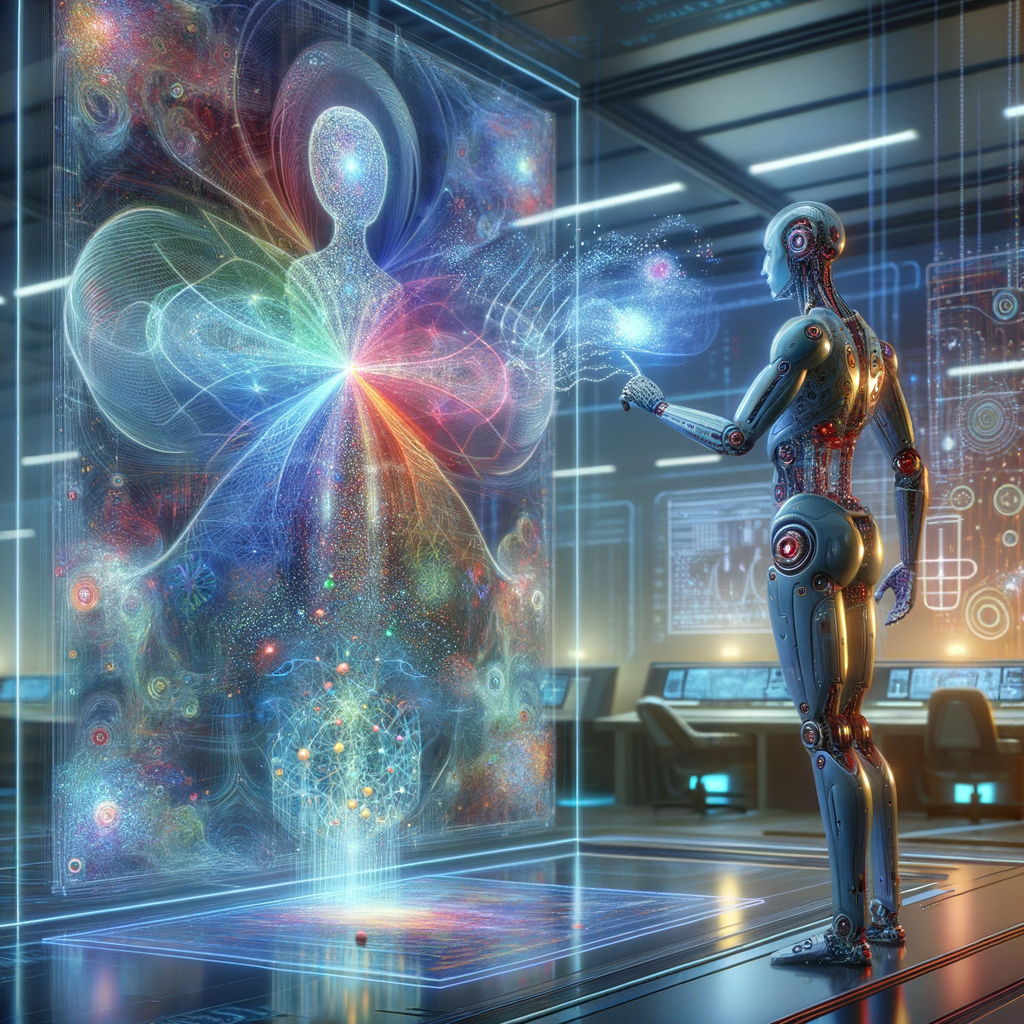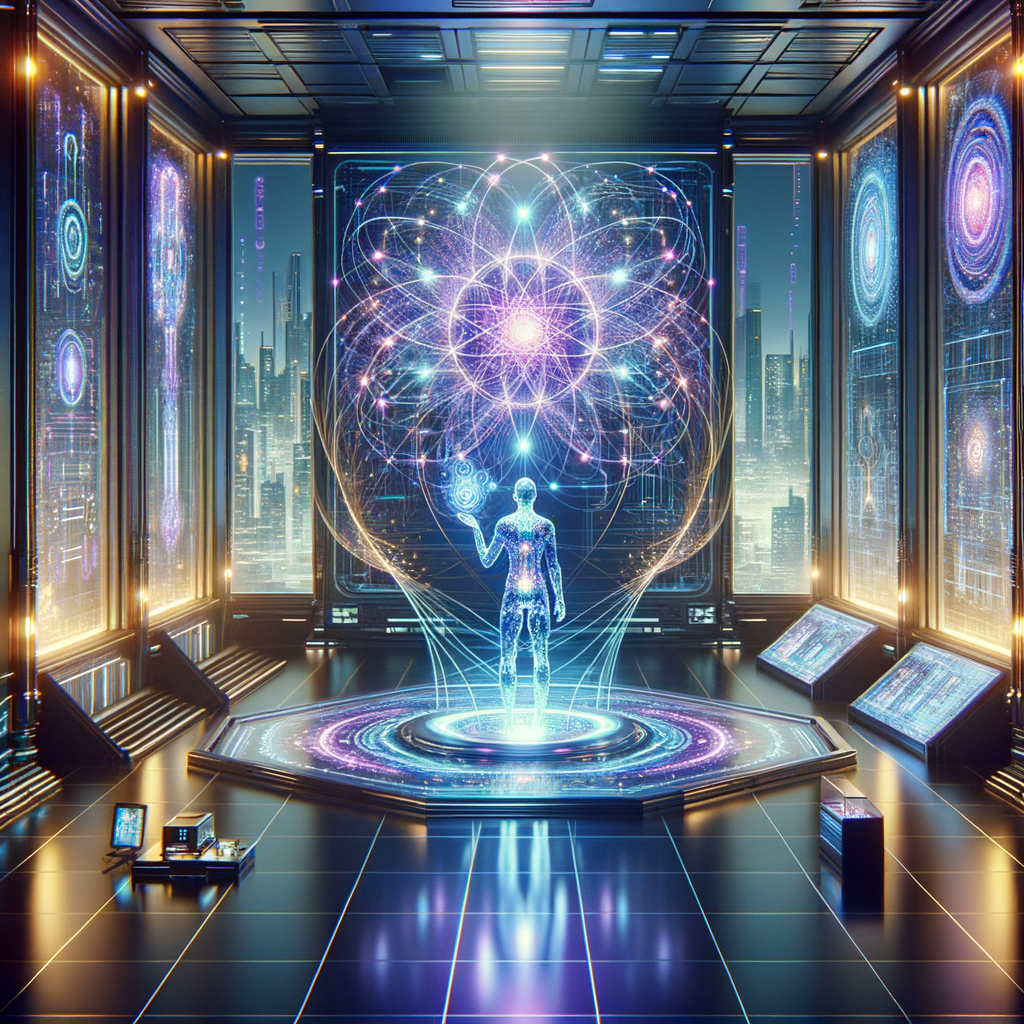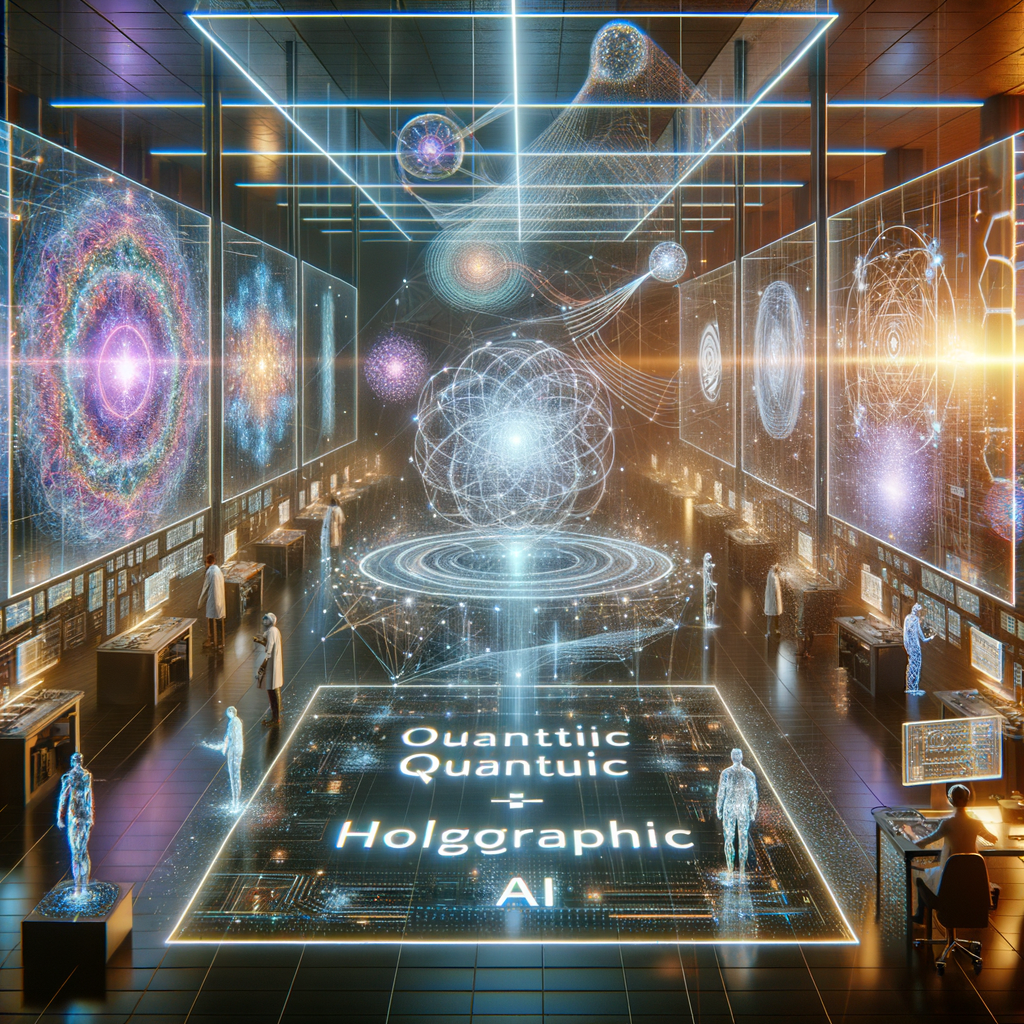 © 2023 / 2024 - QHIQ
© 2023 / 2024 - QHIQIntroduction to Quantic Holographic AI
Quantic Holographic Artificial Intelligence (QHAI) stands at the nexus of quantum computing and complex holographic data structures, forming a revolutionary approach to processing and interpreting vast amounts of information. The synergy between these technologies allows for unprecedented computational power and new capabilities in machine learning and data analysis.
Key Concepts
At the core of QHAI lies quantum mechanics, which provides a foundation for simulating and processing information in ways classical computers cannot. Coupled with holographic principles, which enable the storage of massive datasets in high-dimensional spaces, QHAI can perform tasks such as pattern recognition and predictive modeling with unparalleled efficiency.
Quantum Mechanics and Superposition
Quantum computing leverages the principle of superposition, where quantum bits (qubits) can exist in multiple states simultaneously. This capability exponentially increases computational power compared to classical bits.
import qiskit
from qiskit import Aer, execute
from qiskit.visualization import plot_histogram
# Creating a quantum circuit with superposition
qc = qiskit.QuantumCircuit(1)
qc.h(0) # Hadamard gate puts qubit in superposition
backend = Aer.get_backend('statevector_simulator')
result = execute(qc, backend).result()
statevector = result.get_statevector()
print(statevector)
Holographic Data Structures
Holography enables encoding data in multidimensional matrices that can be reconstructed with high fidelity. This allows QHAI systems to access and manipulate large datasets efficiently, crucial for tasks requiring extensive pattern analysis, like large-scale simulations and AI training.
Recent Advancements
Recent breakthroughs include the development of more stable qubits, improved error correction protocols, and sophisticated algorithms that leverage quantum iterative methods. These advancements make it feasible to tackle real-world problems previously insolvable by classical systems.
Algorithmic Innovations
Novel algorithms like Quantum Approximate Optimization Algorithm (QAOA) and Variational Quantum Eigensolver (VQE) offer optimizations in various sectors, from logistics to pharmaceuticals. Their holographic counterparts enhance data sampling and model training, drastically reducing computational load.
Challenges in the QHAI Landscape
Despite its potential, QHAI faces significant challenges. Error rates in qubits, decoherence, and the need for extremely low temperatures for qubit stability are among the technical hurdles. Furthermore, algorithms must be meticulously tailored to exploit both quantum and holographic principles effectively.
Managing a QHAI Startup
Leading a startup like Quantum Holographic IQ (QHIQ) requires navigating these technical challenges while driving innovation. Resources are often constrained, making strategic planning and partnerships crucial. Investment in highly specialized talent and maintaining a fast-paced R&D environment are essential for staying ahead in this rapidly evolving field.
Future Prospects
The future of QHAI is promising, with potential applications ranging from advanced cryptography to unparalleled simulation capabilities in material science and beyond. As the quantum hardware matures and holographic techniques advance, QHAI is poised to transform industries by providing solutions to problems that were once intractable.
Conclusion
Quantic Holographic AI represents a frontier where quantum mechanics and holographic data converge to unlock new computational paradigms. Despite the challenges, the groundbreaking potential of QHAI in revolutionizing technology and solving complex problems makes it an exciting and transformative field.


























































